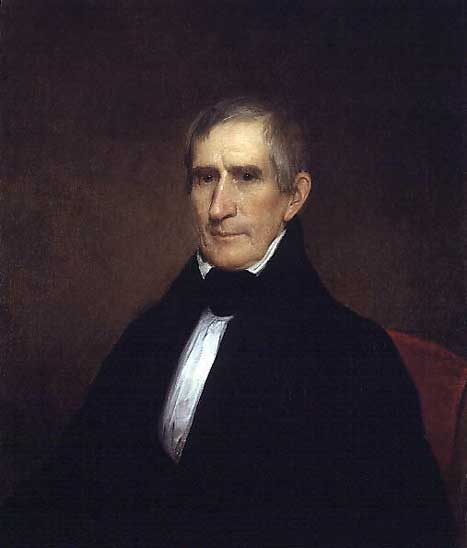William Henry Harrison, 1773–1841

This article is written by Caitlin Swindell, an art history and anthropology major from Tulane University who is interning at the National Portrait Gallery. She writes about Albert Gallatin Hoit’s 1840 portrait of William Henry Harrison, on display in the “America’s Presidents” exhibition on the Portrait Gallery’s second-floor.
President William Henry Harrison gave a lengthy inauguration speech on a freezing day in March 1841 without an overcoat or gloves. The frigid temperatures led Harrison to catch a cold, which developed into pneumonia. A month later, at age sixty-eight, he became the first U.S. president to die in office.
Harrison’s military career had brought him fame and high elective office. He defeated Indian forces at the Battle of Tippecanoe (1811) to open the frontier for settlers and commanded troops in the War of 1812 to repel the British invasion. Although elected president as a war hero, Harrison had obtained a series of noteworthy political credentials before his brief term in office. He was elected to Congress, served as governor of the Indiana Territory, and was appointed the first U.S. minister to Colombia. However, Harrison only won his position in the Senate after a number of attempts, and he was nearly incarcerated in Columbia for supporting an uprising against the government.
Harrison’s path to the presidency was rather conventional, but his presidential campaign was something entirely new. At the time, active campaigning was perceived as tactless, but Harrison employed tactics and techniques different from those of previous candidates. He and his followers used direct character attacks, “dismiss[ing] opponent Martin Van Buren as a snob and a dandy,” notes Cormac O’Brien. Harrison also promoted himself at campaign parties, distributed buttons and showy banners, and was the first candidate to have a campaign slogan—“Tippecanoe and Tyler Too,” which referred to his victory against the Indians and to his vice-presidential nominee, John Tyler.
In campaign speeches, Harrison claimed to be a man of the people, declaring, “I am not a professional speaker nor a studied orator, but I am an old soldier and a farmer, and as my sole objective is to speak what I think, you will excuse me if I do it in my own way.” But in fact Harrison was an aristocratic planter, the son of a signer of the Declaration of Independence, and a trained orator educated in the classics and history at Hampden-Sydney College. Ironically, that lengthy inaugural speech filled with “classical allusions” contributed to his death.
Although he revolutionized presidential campaigning, he had no opportunity to exert his leadership. As a result, William Henry Harrison is remembered only as the president with the longest inaugural speech and the shortest term.
Originally painted for the Whig Republican Association of Boston, Albert Gallatin Hoit’s portrait depicts Harrison in a rigid pose with a hesitant gaze directed at the viewer. This portrait was painted in 1840, the year Harrison was elected the ninth president of the United States.
Bibliography:
Lewis D. Eigen, and Jonathan P. Siegel, The Macmillan Dictionary of Political Quotations (New York: Macmillan, 1993).
Cormac O’Brien, Secret Lives of the U.S. Presidents (Philadelphia: Quirk Books, 2004).
“William Henry Harrison,” American Presidents: Life Portraits
“William Henry Harrison,” The White House